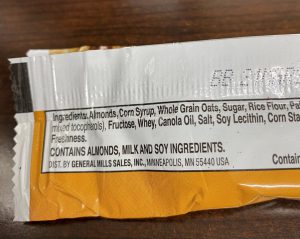When someone has an allergic reaction, it is the body’s response to a protein in a food. The body thinks the protein is dangerous and begins to attack it. Eating, touching, or smelling the food can cause a reaction. The reactions range from mild to severe. Some people react with mild itching or a rash. Others might choke, wheeze and get low blood pressure. Although rare, severe reactions must be treated right away. Someone can have a mild reaction one time and a severe reaction the next time they eat a food with the allergen. They can happen in as little as two minutes up to two hours after eating (smelling or touching) the food.
Although people can be allergic to a variety of foods, traditionally there have been eight that are the most common and make up the majority of serious food allergic reactions in the U.S.:
- milk
- eggs
- fish, such as bass, flounder, cod*
- Crustacean shellfish, such as crab, lobster, shrimp*
- tree nuts, such as almonds, walnuts, pecans*
- peanuts*
- wheat
- soybeans
*Allergies to nuts and fish (including shellfish) are the most likely to cause severe attacks and the least likely to go away.

Now sesame, as of January 1, 2023, will join this list of common food allergens. What this means is that sesame is required to be labeled as an allergen on packaged foods, including dietary supplements. This is good news if you or someone in your household is allergic to sesame. Be aware that the law establishing this sesame labeling does not require food products that were already on their way to the store or on the shelves 2023 to list sesame as an allergen on the label.
To prevent a reaction, foods containing the allergen must be avoided. The label is a great tool for assisting in identification of foods to avoid. Check the label frequently to ensure ingredient changes haven’t been made.
 0
0
